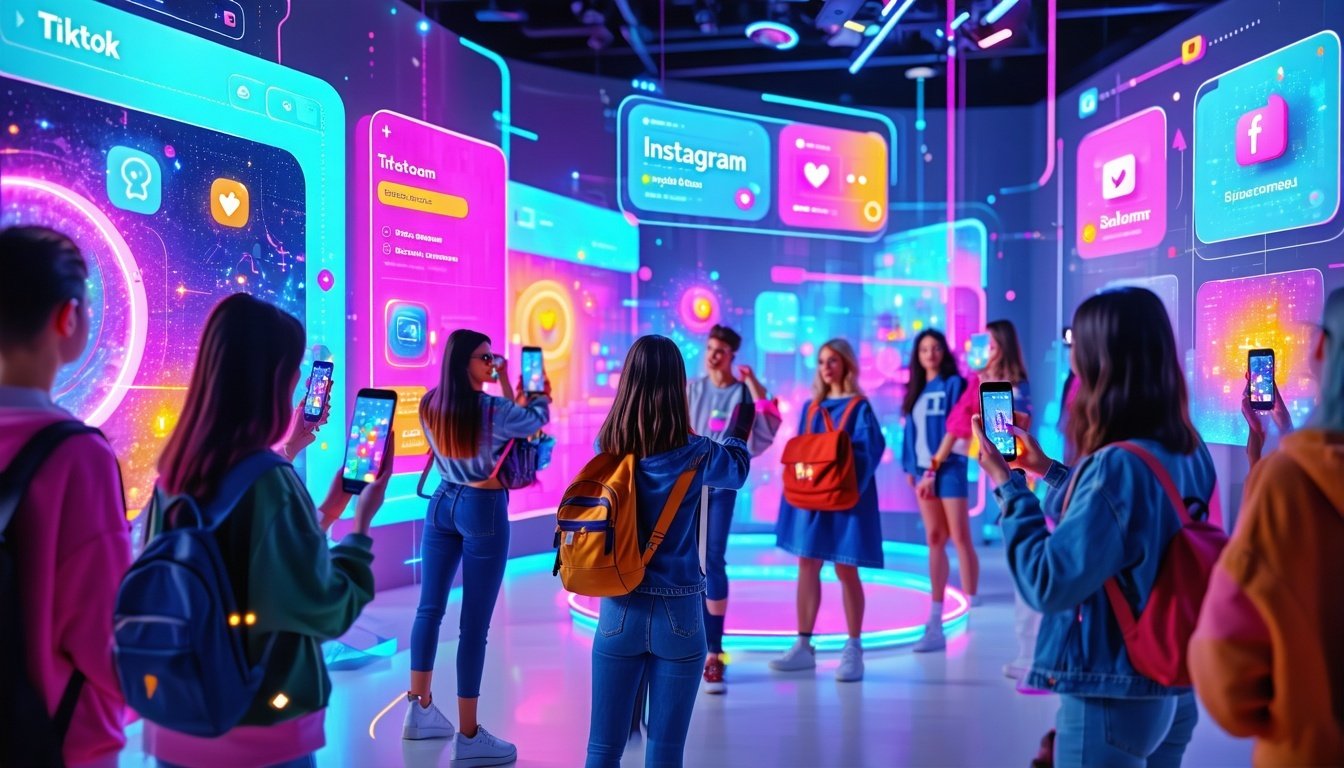
Transforming E-Commerce with Interactive Content and Social Commerce
The Decline of Traditional E-Commerce Funnels
In the dynamic landscape of digital commerce, traditional e-commerce funnels are losing ground. The structured, linear pathways that once guided consumers from awareness to purchase are being overtaken by real-time, interactive, AI-driven commerce experiences. This shift underscores a critical evolution in consumer behavior and technology. According to a recent study, over 70% of consumers now prefer interactive content that engages them actively, rather than passive consumption. This trend highlights the urgency for brands to rethink their strategies and embrace innovation to stay competitive.
Defining Interactive Content and Social Commerce in 2025
As we look ahead to 2025, interactive content and social commerce have become pivotal in transforming how brands connect with their audiences. Interactive content refers to digital experiences that actively engage users, such as polls, quizzes, augmented reality (AR) try-ons, and user-generated content (UGC) contests. Social commerce, on the other hand, seamlessly integrates e-commerce functionalities within social media platforms, allowing users to discover and purchase products without leaving the app.
Platforms like TikTok Shop, Instagram Checkout, and livestream shopping are at the forefront of this revolution. They offer immersive, real-time shopping experiences that cater to the preferences of Gen Z and Millennial consumers, who prioritize convenience, engagement, and authenticity. By leveraging these platforms, brands can create a seamless journey from discovery to purchase, enhancing customer satisfaction and driving sales.
How TikTok Shop, Instagram Checkout, and Livestream Shopping are Redefining Buying Behaviors
TikTok Shop, Instagram Checkout, and livestream shopping are not just trends; they are redefining the way consumers interact with brands and make purchasing decisions. TikTok Shop leverages short-form, engaging videos to drive impulse purchases, capitalizing on the platform's viral nature. Instagram Checkout allows users to buy directly from their feed, streamlining the purchase process and reducing friction.
Livestream shopping, popularized in China and rapidly gaining traction globally, combines entertainment with commerce. It offers an interactive platform where hosts showcase products in real-time, answer questions, and engage with viewers, creating a sense of urgency and community. These platforms are particularly effective in reaching Gen Z and Millennials, who value authenticity and immediacy in their shopping experiences.
The Role of AI in Real-Time Content Generation
AI is a game-changer in the realm of real-time content generation. It enables brands to create personalized, engaging content at scale. AI-driven tools can analyze user data to generate tailored recommendations, craft dynamic content that adapts to user interactions, and automate the creation of rich media such as videos and graphics.
For instance, AI can power chatbots that provide instant customer support, recommend products based on browsing history, and even generate personalized marketing messages. This level of personalization not only enhances the user experience but also increases conversion rates and customer loyalty.
User Engagement Tracking and Personalization
Tracking user engagement and personalizing experiences are critical components of modern e-commerce strategies. Advanced analytics tools enable brands to monitor user behavior in real-time, gaining insights into preferences, pain points, and purchasing patterns. This data is invaluable for creating personalized experiences that resonate with individual users.
Personalization extends beyond product recommendations. It encompasses tailored content, targeted promotions, and customized user interfaces. By leveraging AI and machine learning, brands can deliver highly relevant experiences that drive engagement and foster long-term relationships with customers.
Integrating Payment and Inventory Systems with API
Seamless integration of payment and inventory systems is essential for providing a smooth shopping experience. APIs (Application Programming Interfaces) play a crucial role in this integration, enabling different systems to communicate and share data in real-time.
For example, integrating payment gateways with e-commerce platforms ensures secure, fast transactions, while connecting inventory systems helps maintain accurate stock levels and prevent overselling. These integrations are vital for maintaining efficiency and reliability in the increasingly complex e-commerce ecosystem.
Leveraging Headless CMS and Microservices Architectures
Headless CMS (Content Management System) and microservices architectures are revolutionizing the way brands manage and deliver digital content. A headless CMS decouples the content management backend from the frontend, allowing for greater flexibility and faster content delivery across multiple channels.
Microservices architectures break down applications into smaller, independent services that can be developed, deployed, and scaled independently. This approach enhances agility, enabling brands to quickly adapt to changing market demands and deliver innovative features without overhauling the entire system.
How DaCodes Transforms Static Experiences into Interactive Journeys
At DaCodes, we specialize in transforming static digital experiences into dynamic, interactive journeys. Our approach is anchored in innovation and trust, leveraging cutting-edge technology to create engaging, personalized user experiences.
We design and build real-time user experiences such as polls, UGC contests, and livestream platforms that captivate audiences and drive engagement. By integrating social commerce features with existing e-commerce infrastructure, we help brands create seamless shopping experiences that bridge the gap between social engagement and purchase.
Our expertise in AI allows us to hyper-personalize content at scale, delivering tailored recommendations and dynamic content that resonates with individual users. Additionally, we automate A/B testing and behavioral analytics to continuously optimize performance and enhance user satisfaction.
Conclusion
The future of e-commerce lies in real-time, interactive, AI-driven experiences that engage users and drive conversions. As traditional e-commerce funnels lose ground, brands must embrace innovation to stay competitive. By leveraging interactive content, social commerce platforms, and advanced technologies, brands can create immersive, personalized experiences that resonate with modern consumers.
At DaCodes, we are committed to helping companies navigate this transformation. Explore our approach to interactive content and request a custom ideation session for your next product launch or campaign. Together, we can shape the future of digital commerce.
Sources: Globant. “Interactive Content and Social Commerce: A New Way to Connect With Audiences.” March 2024. https://stayrelevant.globant.com/en/creativity/strategy/interactive-content-and-social-commerce

